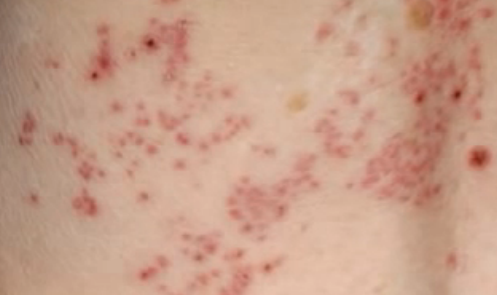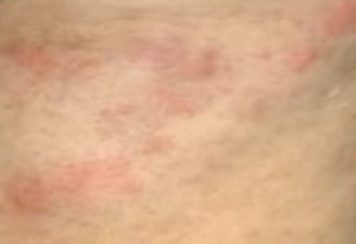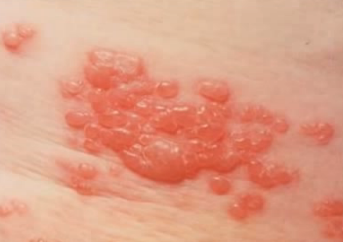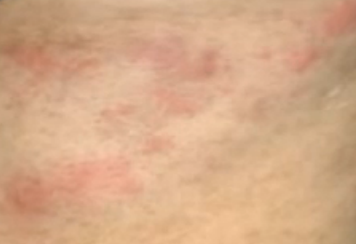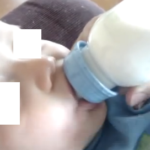Shingles rash is a symptom of a condition called shingles which is caused due to a viral infection. Shingles rash causes a lot of pain. It can occur on any area of the body, but mainly forms as a solitary band of lesions that cover the right or left side of the trunk.
Shingles is primarily caused due to infection by the chickenpox-causing varicella-zoster virus. After chickenpox has been successfully treated and cured, the virus lays inactive in the nerve tissue present near the spinal cord and the brain. After many years, the virus can get reactivated and cause shingles rash.
Shingles rash is a very discomforting and painful disease. It is however not a deadly condition. Early detection and treatment of the symptoms can help prevent the onset of health complications. Vaccines can also help decrease the risk to development of shingles rash.
Symptoms of shingles rash
Singles rash tends to occur on just one side of the body. The accompanying signs and symptoms are listed below:
- Itchiness.
- Burning sensations, pain, numbness, and tingling.
- Appearance of a reddish rash a few days after experiencing pain.
- Fluid-filled blisters may form, burst, and then scab over.
Some patients may also experience additional symptoms like:
- Fatigue
- Generalized achiness
- Headaches
- Fever and chills
Often, the first signs of shingles rash is pain, and severe pain in some patients. Such pain may be misconstrued as being related to heart, lungs, kidneys, etc. anomalies. Some affected individuals may elicit the pain, but may never experience the formation of shingles rash.
Shingles rash typically develops as a band of blisters affecting either the right or left side of the torso. In rare cases, shingles rash may affect one side of the neck, face, or the areas surrounding one eye.
Some health complications that can arise along with shingles rash are listed below:
- Non-treatment or improper treatment of shingles rash can lead to an increased risk to bacterial skin infections.
- If an eye or the areas around an eye are affected by shingles rash, then it may result in painful ocular infections, often leading to loss of vision.
- Shingles rash may cause damage of some nerve fibers, thereby increasing the risk to development of varied neurological abnormalities such as balance disorders, facial paralysis, hearing deficits, and brain inflammation.
- Some patients may continue to experience the pain even after successful treatment of shingles rash. This condition is known as postherpetic neuralgia. It occurs due to confused and exaggerated messages about the pain sent by damaged nerve tissues, from the skin to the brain.
Causes of shingles rash
- Shingles rash is caused due to infection by the chickenpox- causing varicella-zoster virus.
- Varicella-zoster virus is a part of the herpes family of viruses, which includes those causing cold sores and genital herpes. Therefore, shingles rash is also sometimes known as herpes zoster. It may however be noted that the causative virus of shingles rash and chickenpox is different from those causing cold sores and genital herpes.
- People with previous instances of chickenpox are at greater risk to developing shingles rash, because the virus tends to remain dormant in the nervous system for several years, even after successful healing of chickenpox. When the inactive virus becomes active again after some years, it may cause shingles rash.
- Doctors are not aware of the reasons for virus reactivation. It is however theorized that weakening of the immune system with an increasing age may trigger the reactivation. It is also one the reasons why shingles rash typically affects people with impaired immune systems and the elderly.
- Shingles rash is a contagious condition. The viral infection can spread to people who do not have immunity to chickenpox, via direct contact with the open sores and blisters of shingles rash. It may however be noted that such people will suffer from chickenpox, rather than shingles rash.
The below listed risk factors can pose increased threat to development of shingles rash:
- Intake of immunosuppressant drugs after an organ transplant so as to prevent the body from rejecting it.
- Underlying presence of cancers, HIV/AIDS and other immune system impairing diseases.
- Undergoing treatments like chemotherapy which can weaken the immune system
- An increased age of 50 years and above.
Treatment
Shingles rash has no known cure. Early diagnosis and therapy can however help decrease the severity of symptoms and prevent the onset of health complications.
- Extreme shingles rash pain can be alleviated via varied medicines like anticonvulsants, tricyclic antidepressants, numbing agents, and drugs containing narcotics like codeine.
- Valacyclovir, Famciclovir, and Acyclovir may be used to find relief from shingles rash symptoms
- Itchiness and pain can be alleviated with cool, wet compresses, as well as cool baths.
The varicella or chickenpox vaccine and the varicella-zoster or shingles vaccine can help prevent instances of chickenpox and shingles rash. It may however be noted that these vaccines do not guarantee complete protection from shingles rash and chickenpox infections, but can help prevent severe instances of shingles rash as well as decrease the threat to development of complications.
Shingles Rash Images
